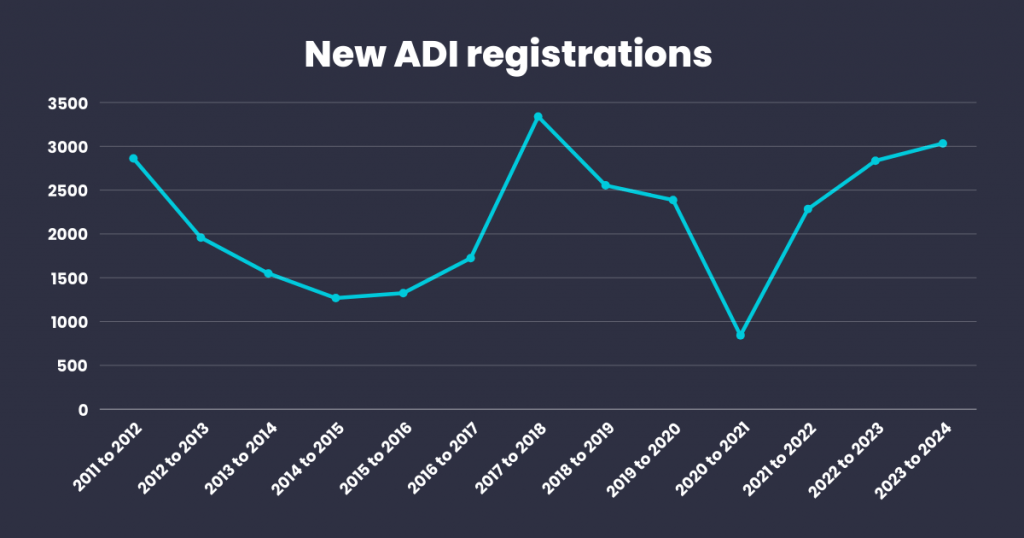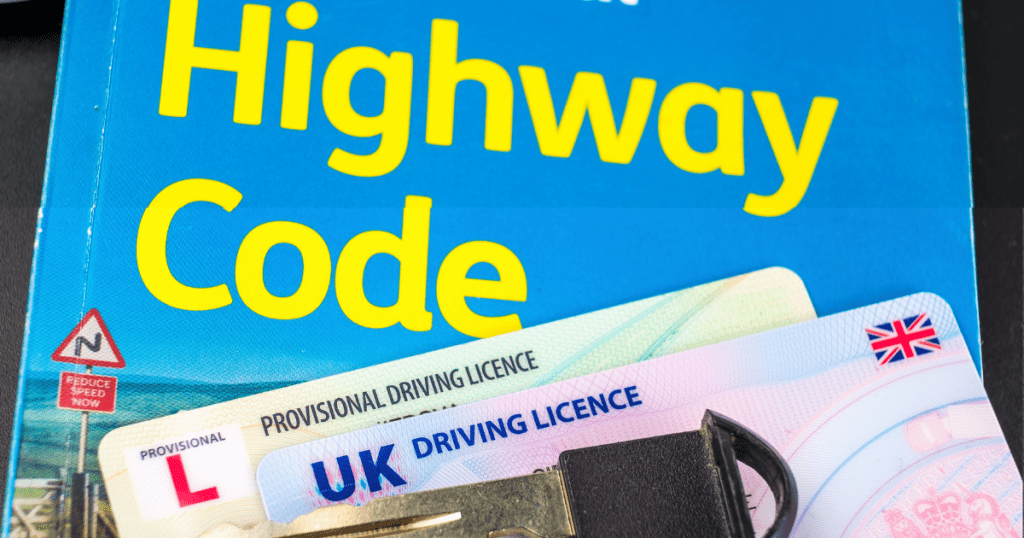Last Updated on December 3, 2024
Being a successful Approved Driving Instructor (ADI) requires patience, professionalism, and a strong understanding of both driving skills and teaching methods. While many ADIs excel in their field, some common mistakes can hinder their effectiveness and the success of their students. Whether you’re a seasoned instructor or just starting, knowing these pitfalls will help you become a better mentor for your learner drivers.
As the driving test evolves and with road safety being increasingly important, the role of a driving instructor isn’t just about teaching basic driving techniques. It’s about nurturing safe, confident drivers who understand the rules of the road and are prepared for any situation. However, even the best driving instructors can sometimes fall into bad habits or make ADI mistakes that affect the learning experience. In this blog, we will cover 10 common mistakes made by driving instructors and how to avoid them, ensuring a more effective teaching approach.
Is It Normal for Driving Instructors to Make Mistakes?
Yes, it’s normal for driving instructors to make mistakes. ADIs are only human, and just like their students, they’re continuously learning and evolving in their profession. However, the key is to recognise when errors occur and to actively work on avoiding them in future lessons and creating stress. The best driving instructors are those who are self-aware and open to improvement.
The high-pressure environment of teaching learner drivers often brings unique challenges. Balancing different learning styles, managing anxious students, and staying up to date with driving regulations can sometimes cause instructors to falter. But with proper awareness and proactive measures, these driving instructor mistakes can be minimised or completely avoided.

Why It’s Important to Try and Avoid Mistakes as an ADI
Whilst mistakes are normal, it is of course best to try and avoid making them where possible. Mistakes can impact your learner drivers’ experience and their readiness for the driving test. As a driving instructor, your reputation is built on your ability to guide students towards becoming safe and confident drivers. If learners feel they aren’t getting the best possible instruction, they may fail their test or potentially develop unsafe driving habits.
Avoiding ADI mistakes doesn’t just benefit your learner drivers, it also benefits you. A well-organised, effective teaching method will potentially help you maintain a solid reputation, can attract more students, and hopefully run a more successful driving school. Here are the most common mistakes made by driving instructors and tips to help you steer clear of them.
The ADI industry is one that is proving to be very popular with the increase in demand for driving instructors. See the below graph which looks at the number of ADI registrations since 2011:

This graph showing the number of new ADI registrations by financial year. You can clearly see trends, such as the decline in registrations from 2011 to 2014, the sharp increase in 2017-2018 (this could be due to the driving test changes made in December 2017), and the significant dip during 2020-2021, likely due to the impact of the COVID-19 pandemic. The upward trend from 2021 onwards reflects the recovery in ADI Registrations which was likely caused because of the demand for learning to drive after the COVID-19 pandemic where driving lessons were halted due to social distancing.
Source: https://www.gov.uk/government/statistical-data-sets/driving-instructor-statistics-ins
10 Common Mistakes Made by Driving Instructors
1. Inconsistent Lesson Planning
One of the most common ADI mistakes is failing to maintain a consistent and structured lesson plan. Learners benefit from a step-by-step approach where skills are built progressively. Jumping from one topic to another without continuity can confuse learners and leave gaps in their understanding. To avoid this, create a well-structured syllabus that gradually introduces new skills while reinforcing previously learned material.
2. Not Tailoring Lessons to Individual Learners
Every student learns at a different pace and in different ways. Some ADIs make the mistake of using a “one-size-fits-all” approach, which can lead to frustration for learners who either feel rushed or left behind. Successful ADIs avoid this pitfall by assessing their students’ needs and adjusting their teaching style accordingly.
3. Overloading Students with Information
While it’s essential to cover the necessary driving theory and practical skills, overwhelming students with too much information at once is a common mistake. This can lead to confusion and anxiety, especially for new learners. Break lessons into digestible chunks and focus on one or two key areas per session.
4. Lack of Patience
Patience is key when teaching learner drivers. Rushing students through lessons or showing signs of frustration can discourage them and negatively impact their learning. Learner drivers need to feel supported, and a patient instructor will help them build confidence behind the wheel.
5. Poor Communication Skills
Effective communication is crucial for clear instruction. Some ADIs struggle with explaining concepts in a way that’s easy for learners to grasp. Avoid this by using simple, concise language and checking in with your students to ensure they understand each point before moving on.
6. Not Correcting Learner Mistakes Early
Failing to correct a learner’s mistakes early on is a significant mistake for driving instructors. Whether it’s improper hand positioning or forgetting to check mirrors, small errors can quickly turn into ingrained bad habits. Instructors must be attentive and proactive in spotting these issues and providing immediate corrections. Addressing mistakes as they happen ensures learners don’t carry these habits into their driving test or future driving, improving their chances of becoming safe, competent drivers.
7. Focusing Too Much on Passing the Test
While helping students pass their test is important, the focus should be on producing safe and competent drivers. Some ADIs make the mistake of teaching solely to pass the test, neglecting real-world driving skills that will keep learners safe on the road. Instead, emphasise road safety, hazard perception, and decision-making skills.
8. Neglecting Manoeuvres
Reversing, parallel parking, and other manoeuvres are crucial aspects of driving and should be a vital part of driving lessons once the pupil is ready. By neglecting manoeuvres, this can leave learners underprepared during their test. Be sure to dedicate enough time to practise these essential skills.
9. Failing to Provide Constructive Feedback
Feedback is essential to the learning process. Some instructors are hesitant to give honest, constructive criticism for fear of discouraging their students. However, learners need to know where they’re going wrong to improve. When giving feedback, focus on both strengths and areas for improvement, and offer actionable steps to help them progress.
10. Not Keeping Up with Changes in Regulations
Driving laws and test criteria change periodically, and staying updated is crucial for ADIs. Failing to keep up with these changes can mean you’re teaching outdated information, which could harm your students’ chances of passing. Make sure you’re always informed about the latest driving regulations and DVSA updates.

Conclusion
Avoiding these ADI pitfalls is key to both your students’ success and your own professional growth. Every mistake, from poor lesson planning to a lack of feedback, can negatively impact a learner’s journey. By being proactive and committed to continuous improvement, you ensure a better learning experience for your students and help them become confident, capable drivers. Being an ADI is not just about passing the driving test; it’s about fostering safe, responsible drivers who can handle real-world challenges. Focusing on essential skills like hazard perception and road safety will not only improve test pass rates but also contribute to overall road safety.
Instructors who avoid common mistakes often build stronger reputations. Providing structured, tailored lessons helps learners progress smoothly and leaves them more likely to recommend your services. A solid reputation can lead to a steady flow of students and potential long-term career success. Additionally, staying updated with the latest DVSA regulations and continuously refining your teaching methods ensures you’re offering the best instruction. This benefits your students, makes your job easier, and contributes to safer roads across the UK.
FAQs
Driving instructors often make mistakes such as inconsistent lesson planning, failing to tailor lessons to individual learners, and neglecting to correct bad driving habits early on.
ADIs can avoid mistakes by maintaining structured lesson plans, staying patient, offering constructive feedback, and keeping up with changes in driving regulations.
Overloading learners with too much information can cause confusion and anxiety, making it harder for them to retain key driving skills. It’s best to break lessons into manageable sections.
To avoid outdated teaching, regularly check DVSA updates, and make sure your instruction aligns with the latest driving laws and test criteria.
In addition to helping learners pass their test, instructors should focus on real-world driving skills such as hazard perception, decision-making, and road safety.









